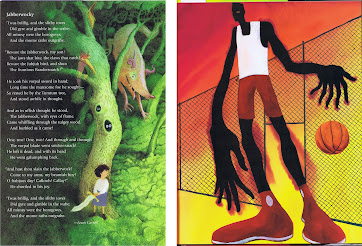Pages
December 27, 2023
Books for Hope
December 22, 2023
Holiday Cards by Logan and More
[Pictures: A Very Merry Christmas, woodcut by Herschel C. Logan, mid 20th century (Image from Kansas Sate University Beach Museum);
Season’s Greetings, woodcut by Logan, mid 20th century (Image from Beach Museum);
Merry Christmas, woodcut by Logan, 1924 (Image from Beach Museum);
Penguin of Peace, rubber block print with watercolor by AEGN, 2023;
Rubber block prints by residents of North Hill, photos by AEGN, 2023.]
December 18, 2023
Wind and Rain
[Pictures: Ejiri: Koyoshida Bridge and Famous Sushi Shop, color wood block print by Utagawa Hiroshige I, c. 1850-1 (Image from MFA Boston);
On the Fury of Cyclones and Hurricanes, woodcut from Historia de gentibus septentrionalibus by Olaus Magnus, 1555 (Image from Wikimedia Commons);
Untitled (Man in Storm), woodcut by Isaac Friedlander, c. 1934 (Image from artnet);
Wind and Snow, color woodcut by James Dexter Havens, 1938 (Image from California Historical Design).]
December 13, 2023
The Fly-Away Horse
 Oh, a wonderful horse is the Fly-Away Horse-
Oh, a wonderful horse is the Fly-Away Horse-
Perhaps you have seen him before;
Perhaps, while you slept, his shadow has swept
Through the moonlight that floats on the floor.
For it's only at night, when the stars twinkle bright,
That the Fly-Away Horse, with a neigh
And a pull at his rein and a toss of his mane,
Is up on his heels and away!
The moon in the sky,
As he gallopeth by,
Cries: "Oh! What a marvelous sight!"
And the Stars in dismay
Hide their faces away
In the lap of old Grandmother Night.
It is yonder, out yonder, the Fly-Away Horse
Speedeth ever and ever away-
Over meadows and lane, over mountains and plains,
Over streamlets that sing at their play;
And over the sea like a ghost sweepeth he,
While the ships they go sailing below,
And he speedeth so fast that the men on the mast
Adjudge him some portent of woe.
"What ho, there!" they cry,
As he flourishes by
With a whisk of his beautiful tail;
And the fish in the sea
Are as scared as can be,
From the nautilus up to the whale!
And the Fly-Away Horse seeks those far-away lands
You little folk dream of at night-
Where candy-trees grow, and honey-brooks flow,
And corn-fields with popcorn are white;
And the beasts in the wood are ever so good
To children who visit them there-
What glory astride of a lion to ride,
Or to wrestle around with a bear!
The monkeys, they say:
"Come on, let us play,"
And they frisk in the coconut-trees:
While the parrots, that cling
To the peanut-vines sing
Or converse with comparative ease!
Off! scamper to bed- you shall ride him to-night!
For, as soon as you've fallen asleep,
With a jubilant neigh he shall bear you away
Over forest and hillside and deep!
But tell us, my dear, all you see and you hear
In those beautiful lands over there,
Where the Fly-Away Horse wings his far-away course
With the wee one consigned to his care.
Then grandma will cry
In amazement: "Oh, my!"
And she'll think it could never be so.
And only we two
Shall know it is true-
You and I, little precious, shall know!
[Pictures: First Flight, rubber block print by AEGN, 2018.]
December 6, 2023
Block Prints by Battiss
[Pictures: Cattle Metamorphosed into Plants, linocut by Walter Whall Battiss;
Horses, woodcut by Battiss, 1943;
Moths, linocut by Battiss;
Boys Picking Wild Fruit, linocut by Battiss;
Boy with Pets, linocut by Battiss;
Four White Rocks, colour woodcut by Battiss (All images from MutualArt).]
December 1, 2023
No. 2 Pencilion
[Pictures: No. 2 Pencilion and No. 2 Yellow Pencilion, rubber block prints with pencil details by AEGN, 2023.]
November 27, 2023
Too Busy - Delirium
November 22, 2023
Autumnal Block Prints
[Pictures: Autumn, color woodcut by Herschel C. Logan, 1924 (Image from Marianna Kistler Beach Museum of Art);
Sturdy Branches, Leafy Tops, woodcut by Nick Wroblewski (Image from NickWroblewski.com);
Late Autumn in Ichikawa, color woodblock print by Kawase Hasui, 1930 (Image from The Clark Museum);
Equinox, linocut print by William Hays (Image from artful home);
Pies, wood block print by Kari Percival (Image from KariPercival.com).]
November 17, 2023
A Jumble of Jabberwocks
Jabberwock (and Jubjub bird?), illustration by Kevin Hawkes from Imagine That! Poems of Never-Was selected by Prelutsky, 1998;
Jabberwock, illustration by Christopher Myers from Jabberwocky, 2007;
Jabberwock, illustration by Joel Stewart from Jabberwocky, 2003;
Jabberwocky, illustration by Eric Copeland from Poetry for Young People: Lewis Carroll, ed. E. Mendelson, 2000;
Jabberwock, Jubjub bird, and Bandersnatch, illustrations by Peter Newell from Through the Looking-Glass, 1902 (Images from Internet Archive);
Jabberwock, Jubjub bird, and Bandersnatch, illustrations by Charles Santore from Jabberwocky, 2020;
Jabberwock and rath, Doulton pottery by Mark V. Marshall, c. 1886 (Images from Wiener Museum of Decorative Arts).]






























